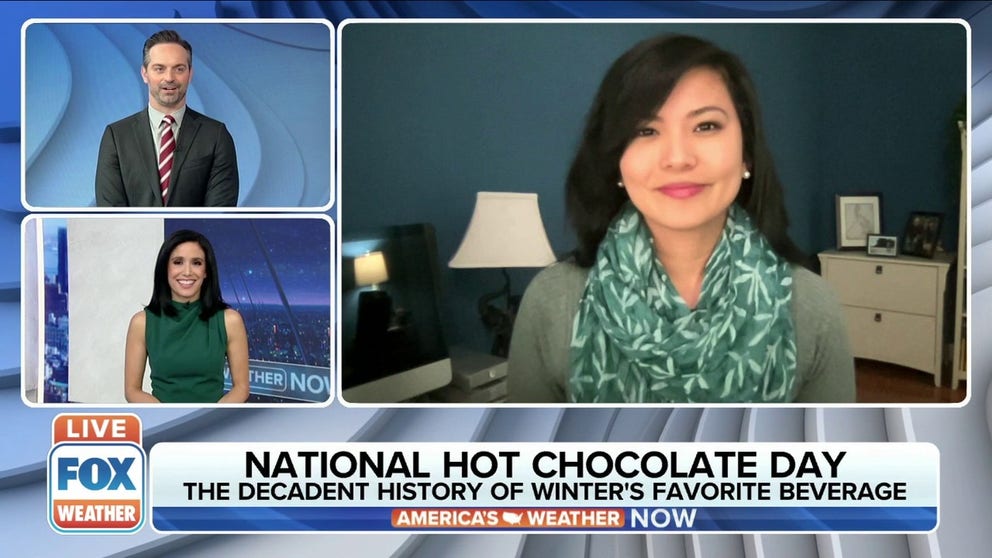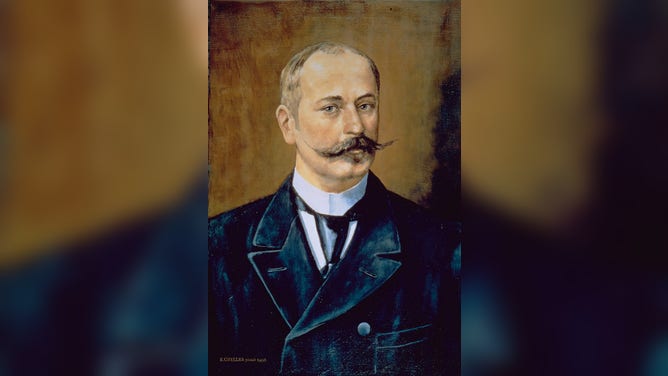The deliciously divine history of hot chocolate
Mayan ingenuity, culinary transformations and Swiss innovation swirled together to create the tasty concoction.
It excites the senses like no other. A treat as much as a tonic, hot chocolate and its rich, velvety texture awakens the heart and soothes the soul.
However, this traditional cold-weather treat, often drank to warm and delight on a chilly winter’s night, actually has its roots where chilly winters are virtually nonexistent.
Hot chocolate’s journey from one of the warmest regions on the planet to your winter mug is a global saga — one involving Mayan ingenuity, culinary transformations and Swiss innovation.
Mesoamerican roots
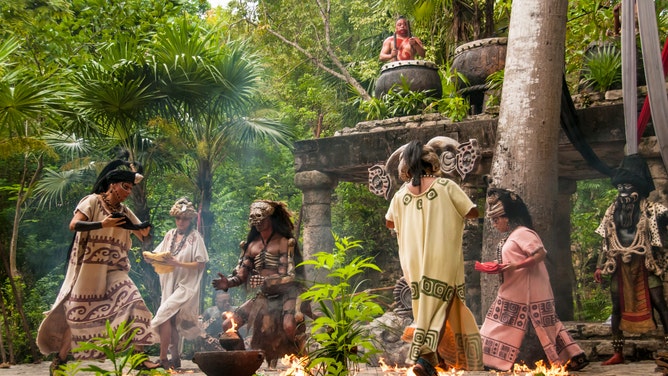
A group in Mexico conducts a performance honoring the Mayan god of cacao.
(Greg Vaughn / VW PICS / Universal Images Group / Getty Images)
"The history of chocolate goes back about 5,000 years," said Kai Spehr, the managing director of the Lindt Chocolate Competence Foundation in Kilchberg, Switzerland.
Located just south of Zurich, the Foundation aims to educate the public about the science, research, history and cultural heritage of chocolate.
"Chocolate’s origins with the Mayo Chinchipe in today's Ecuador. They did not only harvest the wild fruit but started cultivating cocoa," Spehr said. According to Spehr, about 1,500 years later, cocoa had finally reached the high cultures of the Maya and the Aztecs.
The ancient Maya produced a chocolate drink from the fruit of the cocoa tree.
Hot chocolate: the 5,000-year history of winter's favorite beverage
From the tropical cocoa tree to your favorite winter mug, the journey of hot chocolate spans 5,000 years and multiple continents.
According to Spehr, the tree only grows under certain conditions which can only be found around ten degrees north and south of the equator. Known as the "cocoa belt," this region is where cocoa trees can produce fruit — which contains cocoa beans — year-round.
"The cocoa tree's botanical name is Theobroma cacao," Spehr said. "'Theobroma' comes from the Greek words 'theos' meaning 'god' and 'broma' meaning 'food'."
"So, it's a food of the gods — and it's truly a divine experience," Spehr said.
The original recipe
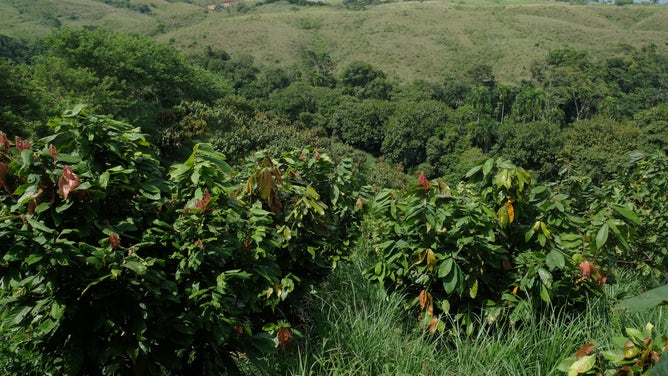
Cocoa trees grow in equatorial Mesoamerica.
(Kaveh Kazemi / Getty Images)
Creating the divine chocolate drink was an involved process.
According to Spehr, once the Maya harvested fruit from cocoa trees, they first had to ferment them. Then, they dry roasted the fruit, shelled them to extract the cocoa beans and then ground the beans very finely to create a paste.
The Maya would then alternate between adding water to the paste and grinding it even more, before reaching a consistency perfect for a drink.

Seeds of the cocoa fruit are sent for fermentation in Colombia.
(Kaveh Kazemi / Getty Images)
"To make it more pleasant to the palate, they added aromas like vanilla or chili or other flavors to it," Spehr said.
The name of this concoction was a combination of both Mayan and Aztec cultures.
"The Mayan word ‘Xocol’, that means ‘hot’, and the Aztec word ‘atl’ means ‘water’," Spehr said. "So ‘xocolatl’, that's where 'chocolate' comes from. Originally, this means 'hot water'."
Food for the gods

A Mayan vessel used for drinking chocolate, dated 600-900. The vessel depicts a lord, warriors and prisoners in the aftermath of battle.
(Heritage Arts / Heritage Images / Getty Images)
Xocolatl [pronounced "sho-co-ah-tul"] may seem simple for modern tastes, but the Maya and Aztecs knew what the drink and its key ingredient — the cocoa beans — were worth.
In fact, according to Spehr, cocoa beans were also used as a form of currency. For example, a rabbit was worth thirty cocoa beans.
"They used [the cocoa bean] as medicine, they used it to baptize their kids," Spehr said. The beans were also used to create a skin moisturizer (cocoa butter) and as offerings for the gods.
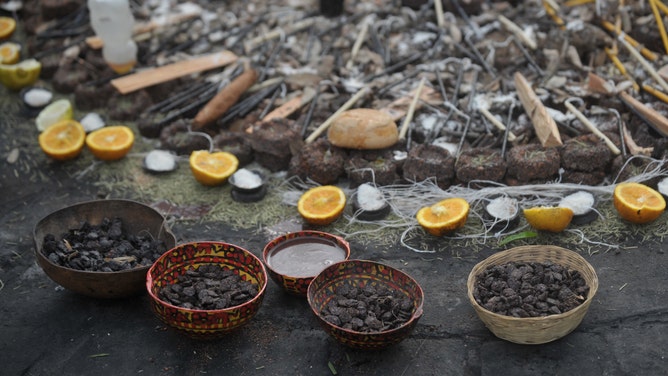
Cacao is presented during the Mayan celebration of "Tz'ikin" day in Guatemala. According to the Smithsonian, it is a "day of money, day of business, and of merchants."
(Johan Ordonez / AFP / Getty Images)
"It was not a product for everyone at the time — it had a very high value," Spehr said. Because of this value, the chocolate drink and cocoa beans were often reserved for the upper class.
Another group from across the ocean would also see the value of this cocoa commodity, helping propel the delicacy from being a local favorite to a global obsession.
La dulce vida
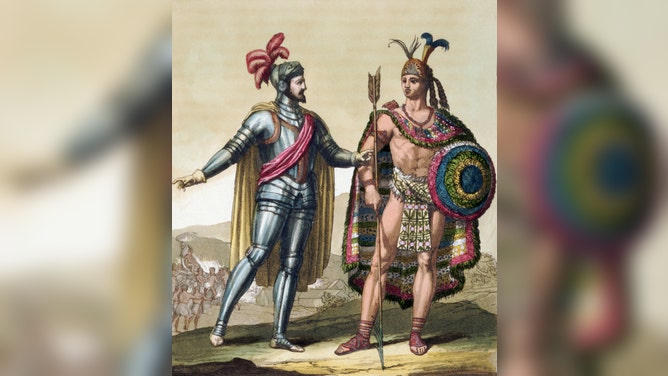
An engraving of Spaniard Hernan Cortes and Aztec ruler Montezuma II in modern-day, Mexico.
(Historical Picture Archive / CORBIS / Getty Images)
In the 15th century, the Spanish reached Central America and learned about the hot chocolate drink — but they didn’t immediately warm up to it.
"It was too bitter for the European palates," Spehr said. "So, they added cane sugar."
They then took this sweetened version of hot chocolate back to Europe in 1554. There, kings, queens, and other members of the aristocracy took notice, developing a sweet tooth for the chocolate drink.
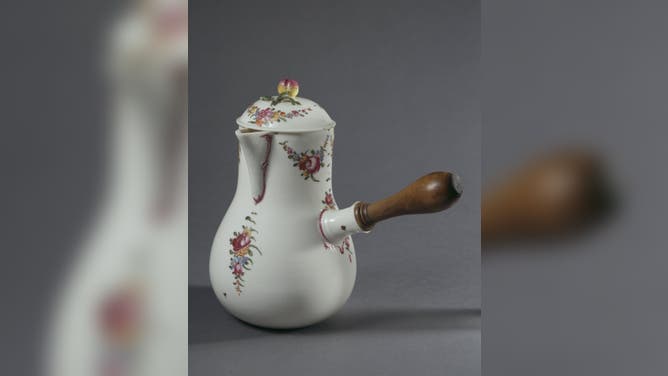
A ceramic chocolate pot with flower decorations, from Italy and dated 1780.
(De Agostini Picture Library / Getty Images)
"It was, for a long time, a luxury food for the noble people," Spehr said. "For example, the noble ladies would sip in the morning when they woke up and got dressed."
According to Spehr, the chocolate drink in Europe — much like in Central America — was considered a luxury, and it was mostly confined to the upper classes for about 300 years.
A confectionary revolution

Early chocolate production at Lindt -- specifically, a hall were cocoa beans were ground.
(Chocoladefabriken Lindt & Sprüngli AG)
The 19th century was a time of considerable change in medicine, lifestyle, technology — and chocolate.
Part of this involved the Industrial Revolution, a widespread transition in technology and labor. While it mechanized many types of work, the Industrial Revolution also changed the way chocolate was made.
"Up to then, the cocoa beans had to be ground by hand, but now we could use hydropower to grind the beans," Spehr said.
Another notable example of a transition was Coenraad Johannes van Houten’s invention of the cocoa press, which facilitated the separation of cocoa and cocoa butter from cocoa beans.
The resulting cocoa powder finally made drinking chocolate inexpensive, tasty and easy to prepare.
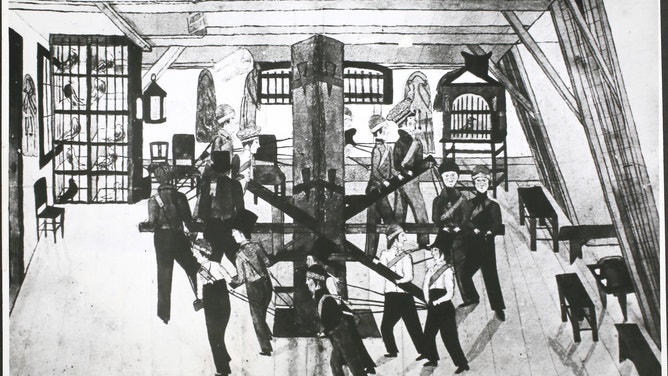
Factory of C.J. van Houten at Amsterdam, with workers at a traditional cocoa mill. In this factory, van Houten invented the way of making cocoa soluble.
(Hulton Archive / Getty Images)
The cocoa tree was also brought from Central America to Africa, where it was planted in areas within the "cocoa belt." According to Spehr, this helped increase the supply of cocoa, helping it become more affordable.
"As the price drops, the process became easier and chocolate gradually changed from a luxury to a consumer food," Spehr said. "And the working class could also enjoy chocolate."
"The drink then was used as a tonic for exhausted workers," added Spehr. "English and also Swiss factory owners, in particular, viewed it as a nutritional and convincing alternative to the often consumed alcohol at the time without the side effects."
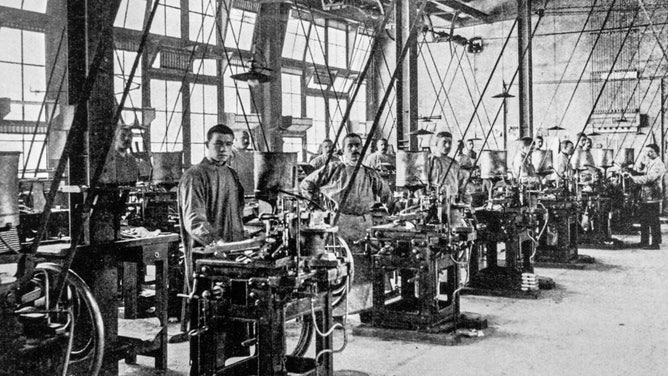
Workers at a 20th-century factory casting types for typesetters.
(Philippe Clément / Arterra / Universal Images Group / Getty Images)
In addition to its medicinal effects, increased supply and easier production, the chocolate drink also received a significant marketing push from Italian craftsmen.
"They were known as ‘cioccolatieri’," Spehr said. "They went around from marketplace to marketplace, from city to city, and produced as much chocolate as they could to sell to local consumers and prepared fresh chocolate on the spot for everyone to consume."
"As a result, the treat of drinking chocolate grew in popularity."
The ‘Chocolate Valley’
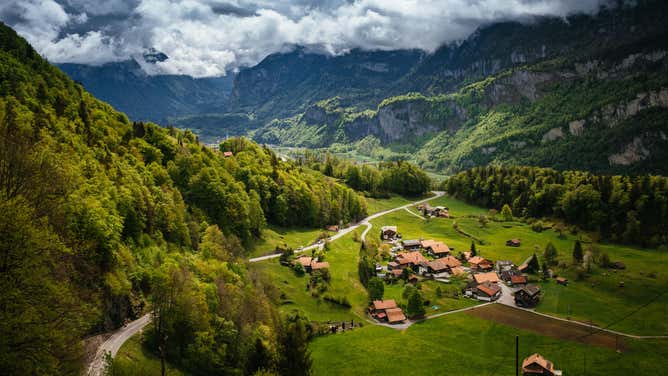
A valley in the Swiss Alps. Switzerland became a hub of innovation in the chocolate industry.
(Piotr Piwowarski / NurPhoto / Getty Images)
In the following years, chocolate would undergo its own transformation. After thousands of years of exclusively being consumed as a drink, innovations in the late 19th century turned chocolate into a solid food.
"Nowadays, you have all the computer specialists in Silicon Valley in the U.S.," Spehr said. "But around 1850 in the Industrial Revolution, there were many pioneers in the chocolate industry in Switzerland."
One of those pioneers included Rodolphe Lindt, who invented the machine called the "Conche". Unlike the traditional process of pressing cocoa by hand, the conche was able to produce chocolate that was solid, yet smooth.
"Chocolate before that time was hard and crunchy, and when you ate it, it was more like sand," Spehr said.
According to Spehr, another Swiss inventor Daniel Peter developed the process that led to the creation of milk chocolate. He worked closely with Henri Nestlé who was experimenting with condensed milk at the time and developed milk powder as well.
Plus, Swiss entrepreneur François-Louis Cailler was the first to produce chocolate on an industrial scale.
"There were many Swiss pioneers in the production of chocolate," Spehr said. "They became best in class in producing chocolate and kept that up until today."
"It's the Swiss perfection, the quality, the innovation, the pioneering that helped put Switzerland forward in this industry."
Wellness from the inside
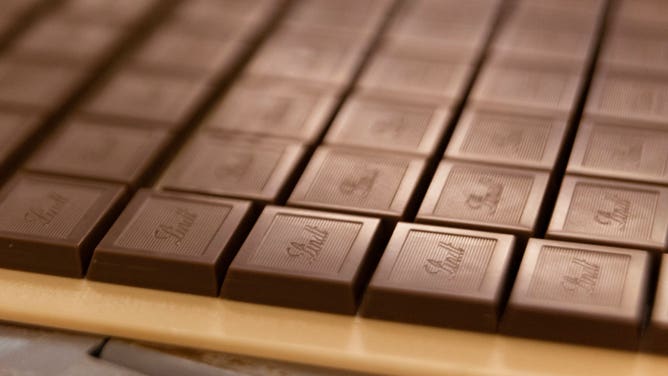
Lindt Napolitains being produced in Kilchberg, Switzerland.
(Chocoladefabriken Lindt & Sprüngli AG)
For years, Switzerland has been the number one consumer of chocolate in the world, often battling Germany for the top spot.
Behind every chocolatey piece and every mug of hot chocolate enjoyed by Swiss, German and all kinds of palates is a long history of innovation.
Switzerland preserves and shares that history in the Lindt Home of Chocolate, a museum where visitors can learn everything about Swiss chocolate and its history.
"This, to me, is eye-opening to see how much love and passion and hard labor go into the product, which we often just buy in the supermarket and eat it without thinking what it takes to make such delicious chocolate," Spehr said.
"If I would describe hot chocolate in one word, I would start with start and end with the letter ‘m’: ‘Mmm!’," Spehr said. "It's wellness from the inside."
